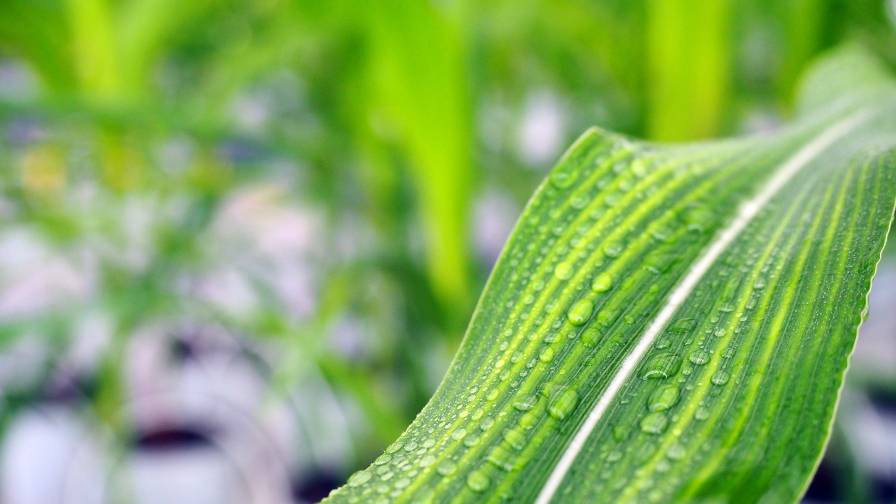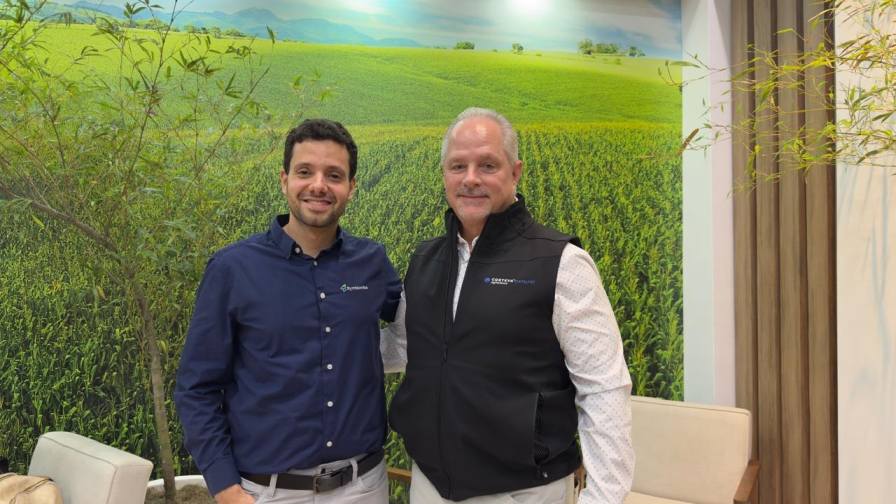Biologicals in Crop Protection: Are They a Better Option Than Chemicals from a Human Health Perspective?
In recent years any discussion of crop protection issues has inevitably led to the question: biologicals — are they a better option than chemicals?
The short answer is — yes — by almost every metric, also from a human health perspective.
However, as our understanding of the mechanisms behind biologicals continues to grow, we must continually be aware that biopesticides, despite generally having a low risk potential for human health or as an environmental hazard, are not necessarily harmless, despite being of natural origin
Introduction
Estimates of global market sizes for crop protection products (conventional pesticides as well as biopesticides) vary, but the consensus is that biopesticides are expected to increase from about 2% of the global pesticide market in 2003 to about 8% in 2020 – driven by a compound annual growth rate nearly three times greater than that for conventional pesticides.
This growth is driven by stricter pesticide regulatory requirements, consumer awareness regarding hazards caused by chemical pesticides, and the need for new and sustainable modes of action are factors driving the growth of the biopesticide market.
Biopesticides can be as effective as conventional chemical pesticides, offer short pre-harvest intervals, offer complimentary modes of action, are generally biodegradable, leave few (or no) harmful residues, and are generally cheaper and easier to register.
Generally, biopesticides have a low risk potential for human health or as an environmental hazard, but it is important to be aware that biopesticides are not necessarily harmless, despite being of natural origin.
Health Considerations: Biopesticide Mode of Action
Biopesticides may be grouped based on their mode of action into Bioherbicides, Bioinsecticides and Bionematicides, and Biofungicides. In the following, we will consider each of these groups from a human health perspective.
Bioherbicides
Generally, bioherbicides target specific enzymes and inhibit their normal function. By inhibiting enzyme function, bioherbicides inhibit the biosynthesis of organic plant constituents, for example, fatty acids, or metabolic processes such as photosynthesis which are necessary for plant function.
While bioherbicides target many of the same plant metabolic processes targeted by conventional (synthetic) herbicides, not all bioherbicide mode of action is directly related to the photosynthetic process.
For example, mitochondria-based metabolic processes — including respiration and lipid biosynthesis — may be inhibited by bioherbicides. Furthermore, mitochondrial respiratory electron transport processes are evolutionarily related to photosynthetic electron transport, and herbicides targeting photosynthetic electron transport may affect respiration in mammals, insects, and microorganisms. This could have implications for the environmental impact of this group of biopesticides and is the subject of growing research interest.
Microbial bioherbicides include bacterial and fungal endophytes (microorganisms which colonize plants without causing disease), as well as viruses.
Adverse health impacts may arise following exposure to these organisms. Research regarding health impacts has primarily focused on the potential toxicity and pathogenicity, while their potential allergenicity is less studied.
Bioinsecticides
Bioinsecticides include microorganisms (such as B. thuringiensis) that infect insects or nematodes, and natural compounds with insecticidal activity sourced from microorganisms, plants, or animals.
Some strains of Bacillus thuringiensis (Bt) are specific to Lepidopteran species, while other strains may target larvae of Diptera and Hemiptera. Reports of Bt toxicity toward non-target organisms, as well as binding of the bacterial toxins to clay soils, have been the topic of debate. Most researchers agree that Bt monitoring must continue, and their use modified as appropriate.
Biochemical bioinsecticides are naturally occurring compounds, typically produced by plants for defense from predation, but also include microbial extracts that control insects or induce plant defense responses.
Biochemical bioinsecticides may target specific insect neural functions, such as the uptake of ions across neural membranes. Generally, bioinsecticides have a high specificity towards insects, due to their greater affinity for insect neuroreceptors, relative to neuroreceptors in mammals.
In contrast to specific insecticides, other insecticides may target metabolic processes which are common to insects and mammals. As the AChE enzyme is similar in insects and mammals, this group of insecticides is not considered selective, and appropriate care must be exercised in their application.
Accordingly, it should be noted that not all natural products are able to be registered as biopesticides. For example, despite their natural origins, pyrethrins, spinosad, and abamectin are registered as conventional (chemical) pesticides due to their neurotoxic mode of action.
Biofungicides
Biofungicides are formulations of living organisms or natural metabolites used to control the activity of plant pathogenic fungi.
Microbial biofungicides include fungipathogenic Bacillus species. The spores of Bacillus bacteria (especially Bacillus cereus and the ‘Bacillus subtilis‘ group) may contaminate and form toxins in food materials, leading to gastrointestinal illness
Biochemical biofungicides include those able to induce endogenous plant defenses in the form of secondary plant metabolites.
While biopesticidal elicitors of plant defense responses themselves may be benign, the induced secondary plant metabolites may pose a toxicological risk.
From the point of view of potential for human health or environmental hazard, we should bear in mind that natural toxins may be many times more toxic than synthetic toxins.
A key factor driving the probable introduction of stricter EU and National regulations is thus the increasing focus on the potential health and environmental impacts of natural plant toxins or metabolites produced through the induction of plant defense responses by biopesticides.
Similarly, for organic crops which are dependent on the induction of natural plant defenses against pests and pathogens, the human and environmental health perspectives of plant-defense related toxins are the subject of growing research interest.
Biopesticide Formulation Inerts
For many biopesticides, formulation components are inert or of no toxicological concern, and risk assessment may be based on the active substance alone, and on the basis of scientific evidence.
The term “inerts” can, however, be misleading, as it implies these components do not have a particular function or that they are benign from a human and environmental health perspective.
Inerts can have health and ecosystem impacts, including endocrine disruption and allergenic effects. Thus, a biopesticide formulation may combine a benign active ingredient in a formulation that includes problematic inert ingredients.
Health Considerations: The Environmental Fate of Biopesticides
The cited advantages of biopesticides should always be considered critically. Common benefits mentioned include:
“Biopesticides are generally biodegradable”
While biopesticides are generally rapidly degraded — a factor cited as an ecotoxicological advantage, but as a disadvantage with respect to product stability under field conditions — care should be taken to avoid excessive generalization.
As many biopesticides are subject to microbial and UV degradation, the rate of degradation may significantly decrease under anaerobic conditions, and in the absence of sunlight.
For example, while pyrethrins are rapidly degraded in soil by microbial activity and photolysis, they experience reduced degradation in anaerobic sediments in the absence of light and may present a toxicological risk to aquatic organisms.
”Biopesticides leave few or no harmful residues”
Under EPA regulations, biopesticides may be subject to exemptions from residual tolerance levels. This is, however, contentious, as it could be argued that the statement “few or no harmful residues” is a question of definition — if the biopesticide is effective against an organism, it must per definition be harmful to that organism, and potentially to other, related or similar organisms.
”Biopesticides are less likely to harm non-target species”
The OECD guidance for microbial biopesticides is that: ‘the micro-organism and its metabolites pose no concerns of pathogenicity or toxicity to mammals and other non-target organisms which will likely be exposed to the microbial product; the micro-organism does not produce a known genotoxin; all additives in the microbial manufacturing product and in end-use formulations are of low toxicity and suggest little potential for human health or environmental hazard’.
Biopesticides with a very specific MoA and rapid degradation could be considered to be less likely to harm non-target species — but this applies to both biopesticides as well as conventional pesticides.
Biosafety: Biopesticide Risk Profiling and Evaluation
While microbial strains are widely prevalent in the environment, they tend to exist in equilibrium in nature which ensures a natural biosafety net. But when specific strains are selected for their biopesticidal activity and are applied at rates sufficient to attain the desired effect levels, this may raise public health and ecological concerns.
As for conventional crop protection products, differentiation between risk and hazard is required: a Hazard is something that has the potential cause harm, while a Risk is the chance that the hazard will cause harm. Risk is often defined as Hazard x Exposure:

It is necessary to include agrobiological considerations when evaluating microbials for pest and pathogen control. Evaluation criteria for Risk Profiling and Evaluation include:
Route of Exposure
The common routes of exposure are oral and pulmonary uptake, ocular irritation, and dermal exposure. As is the case for conventional pesticides, formulation type and method of application define the probable routes of exposure, as well as the populations exposed.
A product applied as a spray or as a dust or powder may be inhaled during handling and application or lead to eye irritancy, whereas a paste is most likely to pose a risk of dermal exposure.
The life-cycle and environmental fate of the organism may also influence the route of exposure. For example, a microbial biofungicide may provide an exposure risk to pesticide applicators, but if sporulation is expected after application, inhalation of the spores may become a significant route of exposure to a wider nontarget population, including humans. An additional risk factor for microbial biopesticides is the potential for allergic sensitization (hypersensitivity) to handlers, applicators, and bystanders following exposure.
Level of Exposure
The environmental fate and life cycle of microbial biopesticides defines the probable levels of exposure.
Microbial biopesticides are generally living organisms and may have the potential to persist and replicate, as well as to spread from the site of application, affecting its relative risk potential for human health or as an environmental hazard.
To attain desired levels of efficacy, biochemical biopesticides may need to be applied at higher doses than conventional pesticides — a factor which must be considered when evaluating biopesticidal toxicity to non-target species.
Risk from Exposure
In addition to the life-cycle and environmental fate of the biopesticide, the biopesticidal mode of action, target pest biology, and ability to induce plant defense toxins determine the potential for toxic or pathogenic effects in humans and other non-target organisms.
Accordingly, a highly specific, biochemical bioherbicide might be considered less likely to cause adverse effects in humans than for example a microbial bioinsecticide with a broad animal host range and targeting a mechanism common to the physiology of the target pest as well as humans.
For living microbial organisms, the physiological ability to survive and replicate in the environment is determined by a number of factors including temperature and metabolic requirements, which define their viability under field conditions and thus their risk potential for human health or as an environmental hazard.
Conclusions
Biologicals in crop protection are a better option than chemicals from a human health perspective.
However, as our understanding of the mechanisms behind biologicals continues to grow, we must continually be aware that biopesticides, despite generally having a low risk potential for human health or as an environmental hazard, are not necessarily harmless, despite being of natural origin.
The potential for adverse effects on human health or as environmental hazards may derive from:
- mode of action (e.g., mitochondrial inhibition as well as neurotoxic effects);
- the potential for allergic sensitization;
- secondary metabolites (e.g., induced plant defense toxins); and
- formulation inerts.
Biopesticide Risk Profiling and Evaluation may be determined by:
- Route of exposure – the nature of the formulation and its potential uptake routes.
- Level of exposure – the physiology and viability of microbial organisms in the environment and the application rates of biochemical biopesticides.
- Risk from exposure – the specificity of the mode of action, target host and mechanism range and climatic as well as metabolic conditions.
Thanks for reading. Please feel free to read and share my other articles. If you found this article interesting, you will find more useful information in The Labcoat Guide to Crop Protection.
For more information, visit BioScience Solutions, which contributes to the development of sustainable crop protection solutions by providing independent strategic R&D management and scientific support to agchem and biosolutions businesses developing science-based products.






